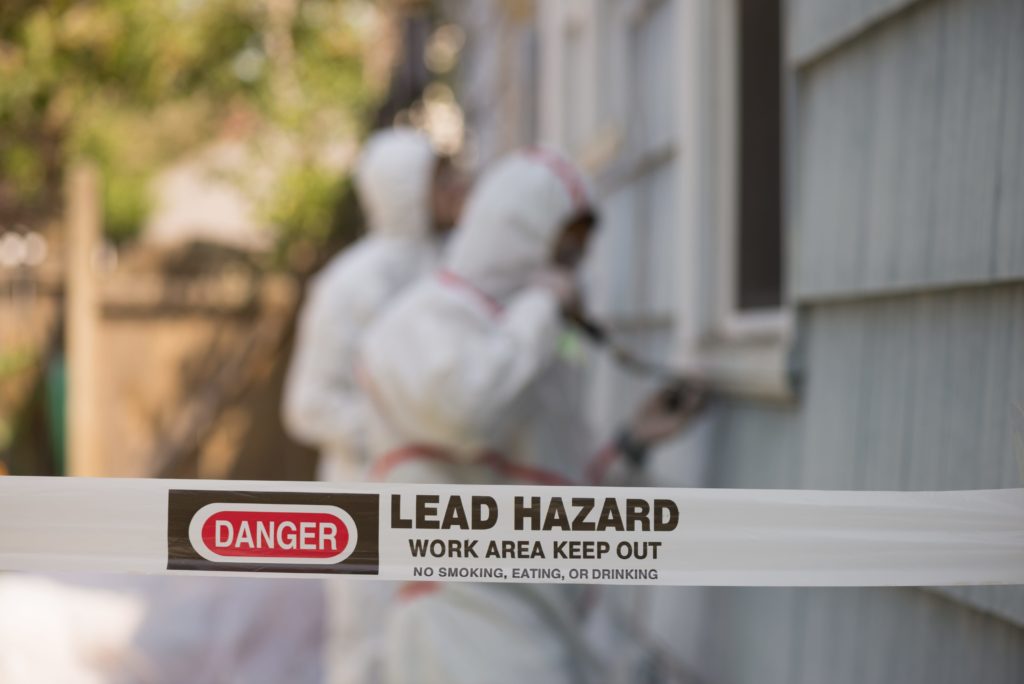The Hazards of Lead Exposure

What is Lead?
Lead is a naturally occurring element that has been used since ancient times due to its intrinsic properties. Lead is a pliable heavy metal known to be denser than other metals with a relatively low melting point. It is also characterized as relatively unreactive, meaning it does not corrode and does not conduct electricity easily. Lead can be used as a pure metal, as an alloy, and as a chemical compound.
All these properties combine to make lead an ideal material for diverse industrial uses and the production of various types of goods. Today, we have seen lead being used widely in the construction industry in roofing sheets, paints, pipes, and taps, as well as in products such as gasoline. Despite these positive characteristics and widespread use of lead, we also know that lead causes extensive health and environmental damage. Hence, workers whose occupations may expose them to lead must be safeguarded from lead poisoning. As a result, organizations such as the Occupational Safety and Health Administration (OSHA) have proclaimed lead to be a human health hazard and has developed a lead standard for the general industry in 1978 and an interim lead standard for the construction industry in 1993, to encourage employers to protect their employees from lead exposure.
Worker Exposure to Lead
As lead is used in the production of a range of products and to carry out different work processes, workers across industries are invariably faced with the possibility of lead exposure. The National Institute for Occupational Safety and Health (NIOSH) has a list of occupations, industries, and work tasks that may result in lead exposure and resultantly lead poisoning. Some of these jobs include lead miners, lead workers, plumbers, painters, pipefitters, and welders.
Workers whose occupations may not involve direct exposure to lead can also still suffer from lead poisoning if their workplace uses products that contain lead. For example, due to the use of lead pipes or lead-based paints.
The adverse impacts of lead are quite severe, and lead exposure can be either acute – due to worker exposure to high levels of lead in the short-term, or chronic – due to long-term lead exposure. It must be noted that the effects of lead exposure can be carried from the worker directly exposed to lead particles to other people, including co-workers, family members, and children. Hence, the requirements to have in place proper and segregated decontamination procedures for workers who may be exposed to lead.

Health Hazards of Lead Exposure
Today, while lead continues to be used in both its organic and inorganic forms, there is a greater understanding of the hazards related to lead exposure and the need for lead safety processes. The negative impact of lead exposure varies from person to person as the absorption of lead in the human body depends on several personal factors including age, individual health status, and intake of healthy food, as well as the nature of the lead poisoning such as the route of lead exposure, length of exposure, and form of exposure.
The health-related hazards caused by prolonged lead exposure can be mild or severe; and even fatal. Some symptoms of chronic lead exposure include loss of appetite, headaches, constipation, a feeling of anxiety, nausea, dizziness, joint, and muscle pain, and even insomnia. Furthermore, lead exposure can also damage critical parts and organs of the human biological system. When organic or inorganic lead enters the bloodstream, there is a higher probability of a person’s central nervous system, brain, heart, kidneys, and reproductive organs being contaminated by lead. Thus, lead poisoning can also cause reproductive issues in both males and females, have an impact on the normal development progress of a fetus, and lead to negative pregnancy outcomes. Overexposure to lead can cause decreased hemoglobin levels which can have far-reaching impacts on a healthy human body. Therefore, workers exposed to lead over a longer period can develop a range of health problems and long-term illnesses ranging from brain damage, heart disease, kidney disease, anemia, and seizures; and may even cause paralysis, memory loss, and an overall decrease in the quality of life.
When working with lead or lead-containing products, workers should regularly test for lead poisoning. A good method to identify lead poisoning is by doing a blood test that tests for blood lead levels. While this test may not indicate the level of lead contamination in the organs of the body, the blood lead levels will guide you on the probability of contracting lead-related diseases in the future.
Protecting Workers from Lead Exposure
To protect workers from lead exposure, employers must have in place appropriate control and prevention procedures as part of their worker protection safety and health program. This is mainly applicable when worker exposure to lead exceeds the OSHA-approved maximum exposure levels. The OSHA Lead Standard for the construction industry determines maximum lead exposure levels for employees who could be exposed to lead while completing job tasks. According to OSHA, the permissible exposure limit (PEL) for lead is 50 micrograms per cubic meter of air and the action level (AL) for lead is 30 micrograms per cubic meter of air. For occupations where lead exposure of workers exceeds 8 hours a day, OSHA has a formula for calculating the workers' allowable exposure known as a time-weighted average (TWA) for that day.
If employers determine that workers' exposure will be greater than those specified by OSHA, then they must also conduct a hazard analysis, provide medical surveillance programs, develop job-specific compliance programs, and use the Hierarchy of Controls to put in place protective measures for worker health and safety. Good housekeeping and hygiene practices; proper hazard communication by posting signs, demarcating lead contamination areas, and giving workers information on the dangers of lead poisoning; as well as providing adequate training, and maintaining workplace activity records are also part of the employer’s responsibilities for safeguarding their employees from the dangers of lead exposure.
Training Programs
OSHA requires employers to provide employees working in and around lead or lead-containing materials for the first time, employees who may possibly be exposed to lead while doing their jobs at or above the AL, or those employees who show symptoms of exposure to lead compounds in the form of skin or eye irritation adequate training and information on the health hazards of lead exposure and the impacts of lead poisoning. Workers must undergo both initial and repeated annual training depending on the changing situation at a worksite.
As a dedicated safety training organization, we offer a comprehensive OSHA Lead Awareness Training online course for the construction industry providing general information and guidelines related to lead exposure in work operations on a construction worksite in compliance with OSHA’s Lead Standard for the Construction Industry. Our online OSHA Lead Awareness training program is aimed at workers who work around lead or lead-containing materials in several industries including the construction industry. Hence, workers, foremen, and supervisors engaged in lead-related work operations on a construction worksite can benefit from our training course.
Enroll Today!

